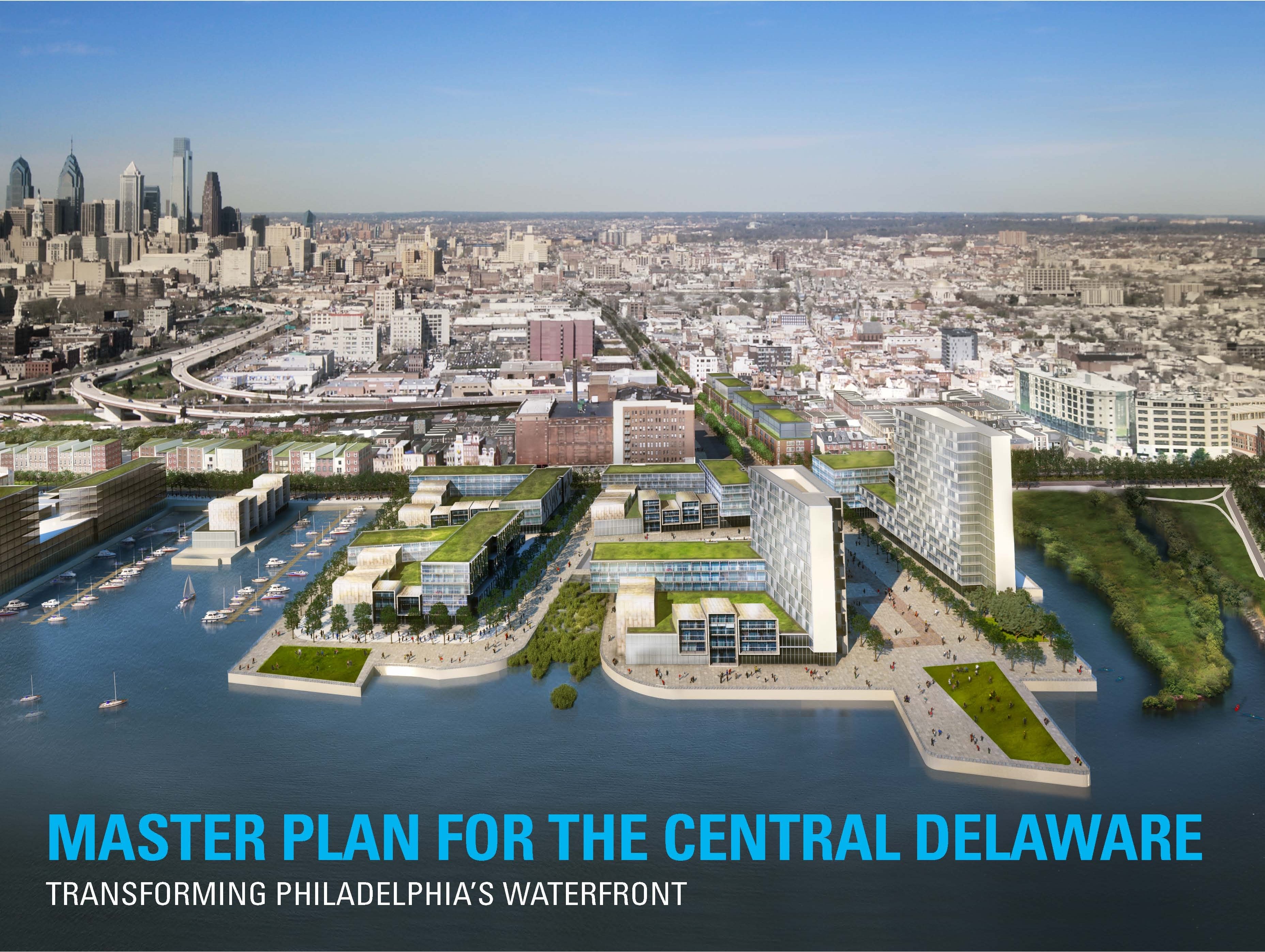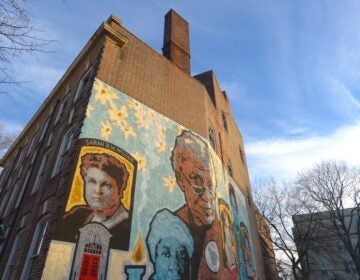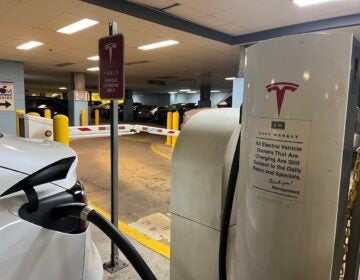Planning and development, a look back at 2012

It’s been a busy year for planning and development in Philadelphia.
The Philadelphia City Planning Commission added more detail to Philadelphia2035, the city’s comprehensive plan, by adopting three district-level plans that apply the broad principles of the citywide vision to clusters of similar neighborhoods, and set specific goals for those neighborhoods.
The PCPC also adopted the Master Plan for the Central Delaware – after some debate over whether to adopt or accept the plan.
And the focus on the waterfront has already led to development and proposed development – some of which tested the 100-foot height limit the master plan calls for.
And on the waterfront and elsewhere, 2012 saw some developers proposing to reuse some old buildings for new purposes.
District-level planning
The City of Philadelphia Planning Commission adopted three district-level comprehensive plans, applying the broad principles and goals of the city-wide vision to the clusters of neighborhoods known as West Park (Including East and West Parkside, Wynnefield and other neighborhoods near Fairmount Park), the Lower Northeast (Frankford, Northwood, Summerdale, Lawncrest, and Oxford Circle ) and Lower South (including the Navy Yard and sports complexes).
The district plans set specific goals for each cluster of neighborhoods. West Park calls for new development at 52nd and Lancaster; changes at and near the Centennial District aimed at providing amenities for neighborhood residents and those that will lead visitors to stay and spend money after visiting the zoo and other attractions; and better transit connections between those cultural attractions. Lower South sets a long-term goal of extending the Broad Street subway to the Navy Yard. It also calls for residential development at the former Naval Hospital site, and mixed use development around the sports complex that would make the area more lively even when there isn’t a big event. The Lower Northeast plan focuses on three key opportunity areas: Frankford Transportation Center, the Frankford Gateway and Castor Avenue. It also calls for the adaptive reuse of the area’s older buildings, and the creation of additional green space.
Plans for the Central District and University Southwest are underway, and expected to be adopted by the commission in 2013. Work will also begin this spring on district-level plans for the Central Northeast, which includes Fox Chase and Rhawnhurst, and Lower North, which includes North Philadelphia, Olde Kensington, South Kensington and West Kensington and Strawberry Mansion. To learn more about the Philadelphia2035 city-wide vision and district-level planning, see the Philadelphia2035 website.
Central Delaware Master Plan
In early March, the PCPC adopted the Central Delaware Master Plan in its entirety. “It’s an ambitious plan,” said Commission Vice Chairman Joe Syrnick before the vote. “It’s not perfect, but this area has languished for far too long, and it needs a road map for moving forward.”
The plan calls for mixed-use development along the seven miles between Oregon and Allegheny avenues, to include residential, commercial and in some spots, industrial uses.
Just days before, the fate of the northern and southern portions of the plan was uncertain, with some discussion that one or both might be accepted instead of adopted. Because it was adopted, the Central Delaware Plan is now part of the city’s comprehensive plan – like the district-level plans. It must be considered by any city governing body, such as City Council or the Zoning Board of Adjustment, when making a waterfront decision. Had the plan been accepted instead, consideration would have been optional.
Plan critics, including the Development Workshop, said that some components of the plan amounted to a taking of privately owned land, and that since the city doesn’t have enough money to put all of the plan into practice, it was unrealistic and put properties in an unnecessary limbo.
Representatives of Jim Anderson, who owns a large parcel north of Penn Treaty Park that was formerly Cramp Shipyard, asked that his property be removed from the plan.
Anderson’s property is now one of the sites under consideration for Philadelphia’s second casino license.
The concerns of the workshop and others, including the Central Delaware Advocacy Group, have led to extended talks on the zoning overlay that would codify the master plan. As of the latest talks, progress had been made in addressing things like property acquisition, height limits (via a bonus structure that would prescribe a specific amount of extra height to developers who provide public amenities, such as building the waterfront trail) and liability issues. First District Councilman Mark Squilla now hopes to introduce legislation in early 2013.
Delaware River development
One big idea in the Central Delaware Master Plan is that development of the riverfront trail and publicly controlled parcels will spur private development. That seems to be happening.
In June, the PCPC approved a plan of development for Ensemble Real Estate’s Marina View Towers at 230-250 N. Columbus Boulevard, close to the Ben Franklin Bridge.
In September, commissioners approved the plan of development for a 209-unit residential development at Piers 34 and 35, also an Ensemble project, after the developer amended the plan with an expanded public walkway to the riverfront and larger space for ground-level retail.
Both of these developments are taller than the 100-foot maximum suggested by the master plan, and their approval is part of what led CDAG to push for a concrete bonus structure that establishes what developers must “give” in order to “get” more height.
Developer Michael Samschick, who owns several blocks of properties on the west side of Delaware Avenue/Columbus Boulevard, within the Central Delaware Master Plan area, opened the first phase of Penn Treaty Village Pennthouses – an apartment building fashioned from a former automobile storage facility on Brown Street– in May.
Samschick began buying up properties along the waterfront about four years ago. He has been meeting with the Delaware River Waterfront Corporation – the quasi-city agency that oversaw the creation of the Master Plan – and seems to have embraced master plan concepts like reusing existing buildings and allowing pedestrian access.
Late in 2012, Samschick got conditional PCPC approval on the plan of development for his next project, which would reuse the former Ajax Metal Works and a former dry ice building in a mixed-use development that will include a Live Nation music venue, a country western bar and grill and a bowling alley. He’s been meeting with Fishtown and Northern Liberties civic groups to discuss the project as well.
Other adaptive reuse
Across the city at 1314-16 North Broad Street, Mosaic Development Partners plans to transform the former Blue Horizon boxing venue into a boutique hotel with restaurants and a jazz club. The planning commission voted in support of a zoning change to the parcel in March, and city council made the change in May. Work is expected to begin in 2013.
Further south on Broad Street, developer Bart Blatstein hopes to redevelop the former Inquirer building and surrounding properties into a residential and commercial complex that he hopes will include the city’s second casino.
Casino news in the new year
The state has received six applications for that second license. In addition to Blatstein’s at the former Inquirer and Las Vegas casino developer Steve Wynn at the Anderson site, Market East Associates hopes to build Casino Philadelphia at 8th and Market Street and three potential operators have their eyes on Packer Avenue in South Philadelphia. PHL Local Gaming, LLC wants to build Casino Revolution at 3333 South Front St., which is near the intersection of Front Street and Packer Avenue, east of the sports arenas and near I-95 and the Schuylkill Expressway. Stadium Casino, LLC hopes to build Live! Hotel and Casino at 900 Packer Ave. and PA Gaming Ventures, LLC hopes to build Hollywood Casino Philadelphia at 700 Packer Ave.
The new year will bring the first public presentation of all the plans, as the Pennsylvania Gaming Control Board has requested that all applicants for the available Category 2 casino license in Philadelphia present their proposals at a 9 a.m. forum on Feb. 12, 2013 at the Pennsylvania Convention Center.
The Board’s will have public hearings on the proposals later in 2013, but the award of a license this year is unlikely.
Reach the reporter at kgates@planphilly.com
WHYY is your source for fact-based, in-depth journalism and information. As a nonprofit organization, we rely on financial support from readers like you. Please give today.






